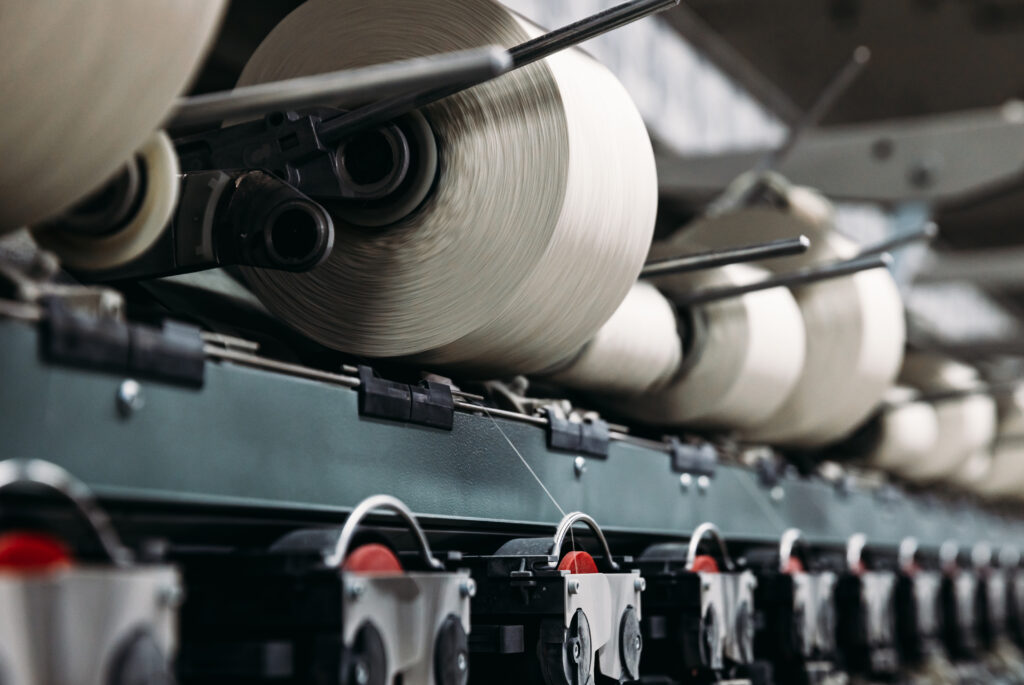The Rotor Spinning Machine, a marvel of modern engineering. It is known for producing high-quality yarns with precision. Its unique spinning process helps spin high-quality yarn with accuracy at scale. Let’s take a closer look at its structure and how it operates. We’ll also break down the key principles and advantages of the machine. Whether you’re familiar with industrial machinery or just curious, this guide will give you a clear understanding of what makes the Rotor Spinning Machine tick.
Structure of a Rotor Spinning Machine
A Rotor-Spinning machine has many critical units. They work together to make yarn. These units include:
Feed Unit:
- Feed Roller: This part feeds the fiber sliver into the machine. It makes sure the fibers are delivered evenly to the next part.
- Sliver Can: This container holds the sliver (a long bundle of fibers) and ensures a steady supply to the feed roller.
Opening Unit:
- Opening Roller: This roller has teeth or spikes that help to open up the sliver into individual fibers.
Transport Channel:
- Air Stream: This uses a stream of air to transport the opened fibers from the opening unit to the rotor.
Rotor:
- Rotor Cup: This is a fast-rotating part where the fibers are collected and twisted into yarn. It’s crucial for creating the yarn.
- Rotor Shaft: This part supports and drives the rotor cup, helping it spin at high speeds.
Condensing Zone:
- Condenser: This part concentrates the fibers into a compact form before they enter the rotor.
Yarn Formation Zone:
- Navel: This is a stationary part inside the rotor where the fibers are laid down and twisted into yarn.
- Twist Insertion: This process twists the fibers together to form yarn as they are pulled out of the rotor.
Delivery Unit:
- Take-Up Rollers: These rollers pull the yarn out of the rotor.
- Winding Mechanism: This mechanism winds the yarn onto bobbins or cones, making it ready for the next steps in processing.
Control and Monitoring Systems:
- Sensors and Electronic Controls: These parts monitor and adjust various parameters like rotor speed, feed rate, and yarn tension. They help ensure the machine works efficiently and the yarn quality remains consistent.
Modern rotor-spinning machines have advanced control systems that automatically adjust settings in real time.
Working Principle of Rotor Spinning Machine
The Rotor machine works with several key steps. Each step is critical for making high quality yarn..
- Feeding and Opening: The feeders push the fiber clumps into the opener roller, which breaks them into individual fibers.
- Suction and Draft: The transport tube sucks the fibers and air together, stretching and thinning them out as they travel through the narrowing funnel.
- Fiber Collection: The high speed spin of the rotor creates a strong outward force (centrifugal force). This pushes the fibers towards the groove on the inside rim of the rotor, where they collect.
- Twisting and Yarn Formation: A strand of yarn is fed through the draw-off nozzle near the rotor. As the rotor spins, it wraps the yarn around itself, twisting the fibers together and incorporating them into the growing yarn.
- Winding: The finished yarn is pulled away from the rotor by rollers and then wound onto a bobbin by the winding unit.
- Quality Control: The system checks rotor speed, fiber rate, and yarn tension as the rotor spins. The system corrects any deviations from the set parameters. This ensures consistent yarn quality and machine efficiency.
Note: The rotor balancing machine is key. It maintains the balance of the rotor, which is critical. The balance is key for the Rotor machine to run smoothly and for the yarn to be high quality.
Advantages of Rotor Spinning Machine
Rotor spinning offers several advantages over traditional spinning methods:
- Higher Production Speed: This high speed allows for faster yarn production. It makes rotor-spinning machines efficient.
- Cost-Effectiveness: Rotor spinning is more cost-effective. It needs fewer processes and less labor than traditional spinning.
- Flexibility: Rotor machines are flexible. They can make a wide range of yarns with different properties. This makes them suitable for multiple uses in the textile industry.
- Consistency: The Rotor machines have advanced control systems. They ensure consistent yarn quality. The systems minimize defects and variations.
In conclusion, the rotor spinning machine is a key player in the world of manufacturing, combining precision and efficiency to produce high-quality yarns. Understanding its structure and operation not only highlights its importance but also showcases the sophisticated technology behind everyday textile products.
Whether you’re involved in the industry or simply interested in the technology, appreciating the workings of this machine marks its role in shaping the materials we use daily. So, next time you encounter a high quality yarn, you’ll know exactly what goes into making it.


